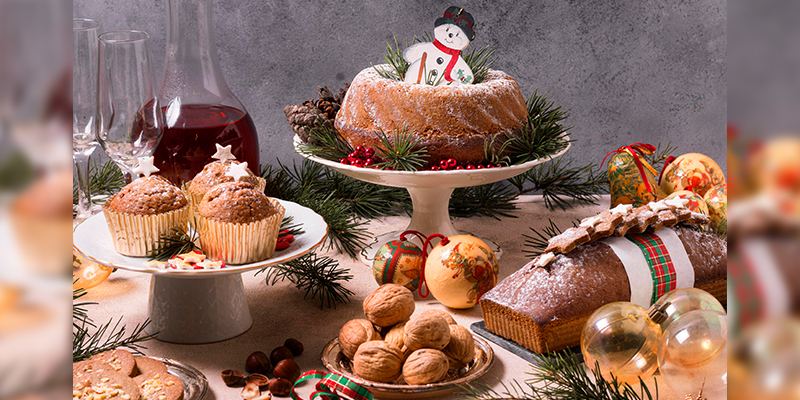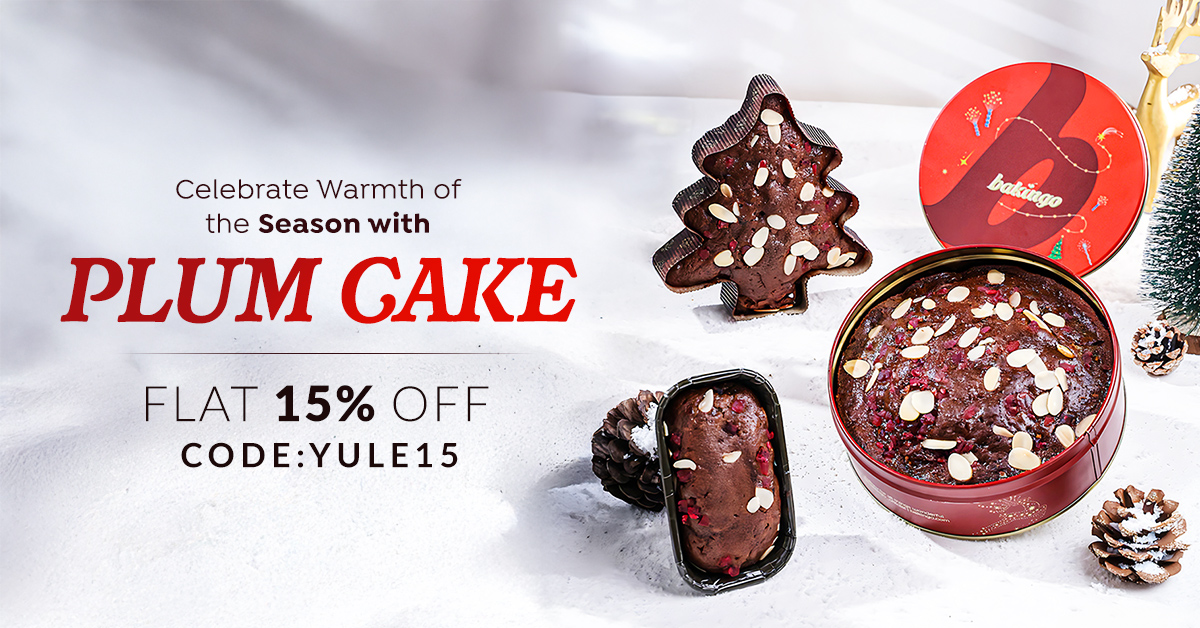Table of Contents
There’s something uniquely magical about the holiday season that fills homes with warmth and joy, and at the heart of this festive time is the aroma of freshly baked Christmas cakes and desserts. These delightful treats have transcended time and tradition to become a beloved part of holiday celebrations around the world. So much so that the festivities feel incomplete without Christmas desserts, whether it’s the rich, dense plum cakes or the intricate Yule logs.
But how did these delectable confections become intertwined with Christmas celebrations? That’s what we’re going to uncover in this blog. So, keep reading as we journey through the history of Christmas cakes and traditions to discover how they have evolved over the centuries.
The Origins of Christmas Cakes
The story of Christmas cakes begins in ancient Rome, where early versions of holiday desserts took shape in the form of dense, sweet loaves. Roman cooks would mix barley mash, pomegranate seeds, nuts, and honey into a rudimentary treat that laid the groundwork for future festive bakes.
As the Middle Ages arrived, the simple Roman cake gave way to something more decadent. Medieval Europe witnessed the emergence of plum porridge, a warming dish made of boiled oats, dried fruits, spices, and meats. This dish was a staple at Christmas time, providing warmth and nourishment during the cold winter months. Over time, as sugar became more readily available and baking methods evolved, plum porridge morphed into a more refined and festive dessert known as plum cake. The addition of dried fruits, such as raisins and currants, along with spices like cinnamon and nutmeg, introduced layers of flavour that transformed this humble dish into a seasonal delight.
By the 16th century, plum cakes had become a popular treat, evolving into what we now recognise as one of the most essential Christmas cake traditions. It moved away from porridge roots to become a baked confection enriched with flour, eggs, and butter, signalling a shift from sustenance to celebration.
The Enduring Legacy of Fruitcakes and Plum Cakes
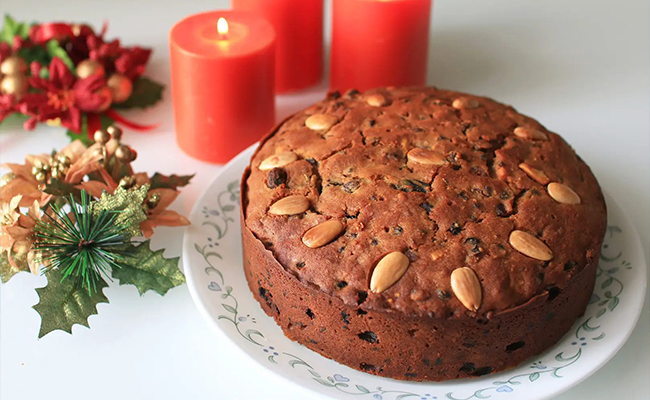
The journey behind the traditional Christmas desserts we cherish today is truly captivating. The fruitcake, a descendant of the medieval plum cake, carved out its own distinct identity in Victorian England. With the expansion of trade routes, exotic ingredients like almonds, candied peels, and rich spices became more accessible, allowing bakers to create elaborate cakes that were as much a symbol of status as they were a treat. This period saw the widespread practice of soaking fruits in brandy or rum before incorporating them into cake batter, a technique that not only enhanced flavour but also preserved the cake, making it ideal for the long winter.
The popularity of fruitcake as a Christmas staple took hold for practical and symbolic reasons. The richness of the cake, filled with dried fruits and soaked in alcohol, meant it could be made well in advance and enjoyed weeks later when the holiday festivities peaked. The alcohol acted as a preservative, allowing families to prepare these cakes as early as November and keep them until Christmas Day. Who would have thought that this practice would shape the Christmas cake traditions of the future? Even today, the ritual of making a Christmas cake weeks or even months before the holiday, known as “feeding” the cake, is cherished by many.
The Rich Symbolism of Christmas Cake Ingredients

Exploring Christmas cake traditions wouldn’t be complete without understanding their deeper meaning. Christmas cakes are more than just a collection of ingredients; they carry deep symbolism that connects them to the season’s themes of joy, generosity, and reflection. The abundance of dried fruits like raisins, sultanas, and currants represents a bountiful harvest, symbolising gratitude for the year’s yield. Nuts, another common addition, are believed to bring good fortune and prosperity.
Spices such as cinnamon, cloves, and nutmeg hark back to the gifts brought by the Wise Men to the Christ child, each representing an exotic element from faraway lands. Their warm, fragrant notes evoke the comfort and warmth of the holiday season. The liberal use of sugar and alcohol in Christmas cakes also holds significance. Sugar, once a luxury item, elevated the status of the cake and represented festivity. Alcohol, on the other hand, served both a practical purpose and a ceremonial one. The act of pouring brandy over the cake and setting it alight before serving—a tradition known as flaming—signifies a gesture of goodwill and the lighting of the path to the new year. Together, these elements form the backbone of Christmas cake traditions, showcasing why they have been treasured for generations.
Modern Twists on Classic Christmas Desserts
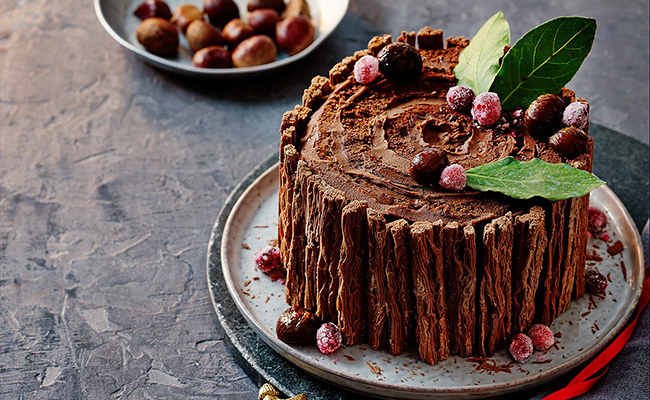
While traditional fruitcakes and plum cakes still hold a place on the Christmas table, modern bakers have found innovative ways to reinvent these classics. Chocolate-studded fruitcakes, vegan Yule logs, and cakes infused with unexpected flavours like orange zest and ginger are now part of the evolving landscape of Christmas desserts. This demonstrates that Christmas cake traditions are ever-changing and adapting seamlessly to different eras without losing their essence.
Bakers are trying their hand at new interpretations, such as creating no-bake Christmas cakes with layers of biscuits, cream, and fruit preserves or crafting mini fruitcakes for personalised gifts. They are putting a creative spin on their festive baking by experimenting with unique ingredients. After all, the world of Christmas desserts is ever-expanding.
The Tradition of Cake Gifting and Sharing
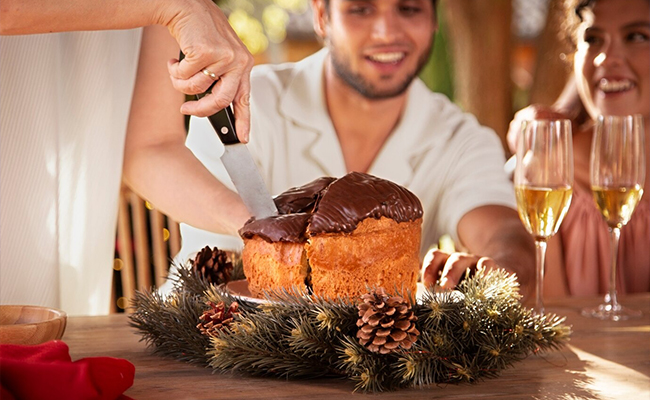
The practice of gifting Christmas cakes has its roots in the Victorian era when exchanging food items was a common way of expressing goodwill and kindness. The rich, indulgent fruitcake became a popular gift during this time, becoming a gesture of generosity and hospitality. Receiving a cake meant that the giver had invested time, care, and resources, making it a heartfelt gift.
The tradition of sharing cakes and desserts during Christmas is a testament to the season’s spirit of togetherness. The act of cutting the cake at the family table and sharing it with loved ones represents unity and the joy of collective celebration. Whether enjoyed with a warm cup of tea, mulled wine, or hot chocolate, a slice of Christmas cake embodies the comfort and joy of the holiday season. And when accompanied by surprises like Christmas gift hampers, handmade tokens, or other thoughtful gifts, it becomes even more wholesome.
Wrapping Up
Christmas cakes and desserts have come a long way from their humble beginnings in ancient Rome to their current status as festive showstoppers. As we gather around the table, sharing laughter and joy, these cakes remind us of the universal love for food that connects us all. So, this holiday season, don’t forget to make or share a special Christmas cake to create lasting memories with loved ones!
